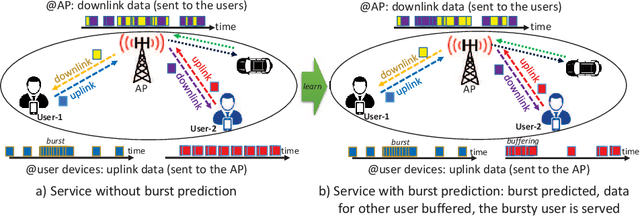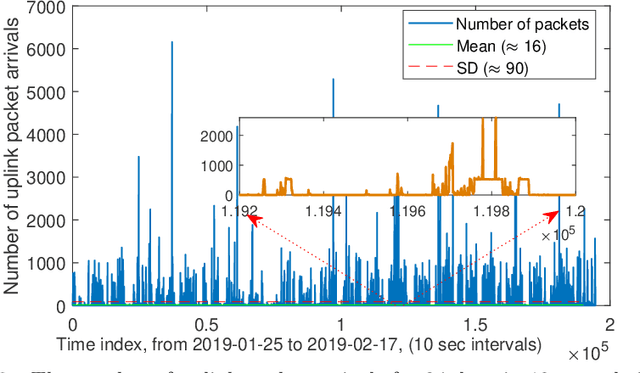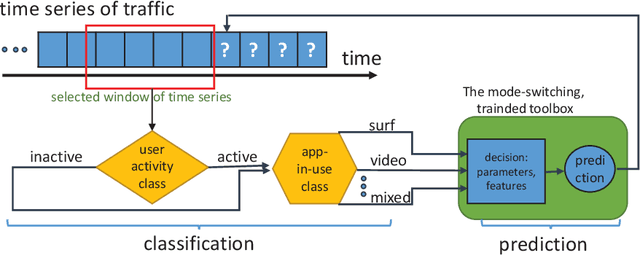Cellular Traffic Prediction and Classification: a comparative evaluation of LSTM and ARIMA
Paper and Code
Jun 03, 2019



Prediction of user traffic in cellular networks has attracted profound attention for improving resource utilization. In this paper, we study the problem of network traffic traffic prediction and classification by employing standard machine learning and statistical learning time series prediction methods, including long short-term memory (LSTM) and autoregressive integrated moving average (ARIMA), respectively. We present an extensive experimental evaluation of the designed tools over a real network traffic dataset. Within this analysis, we explore the impact of different parameters to the effectiveness of the predictions. We further extend our analysis to the problem of network traffic classification and prediction of traffic bursts. The results, on the one hand, demonstrate superior performance of LSTM over ARIMA in general, especially when the length of the training time series is high enough, and it is augmented by a wisely-selected set of features. On the other hand, the results shed light on the circumstances in which, ARIMA performs close to the optimal with lower complexity.
 Add to Chrome
Add to Chrome Add to Firefox
Add to Firefox Add to Edge
Add to Edge